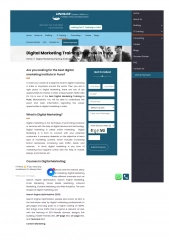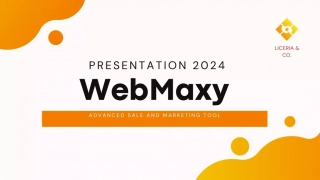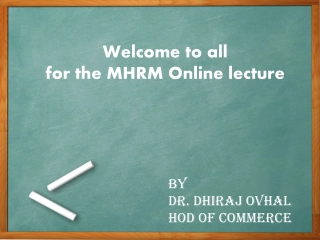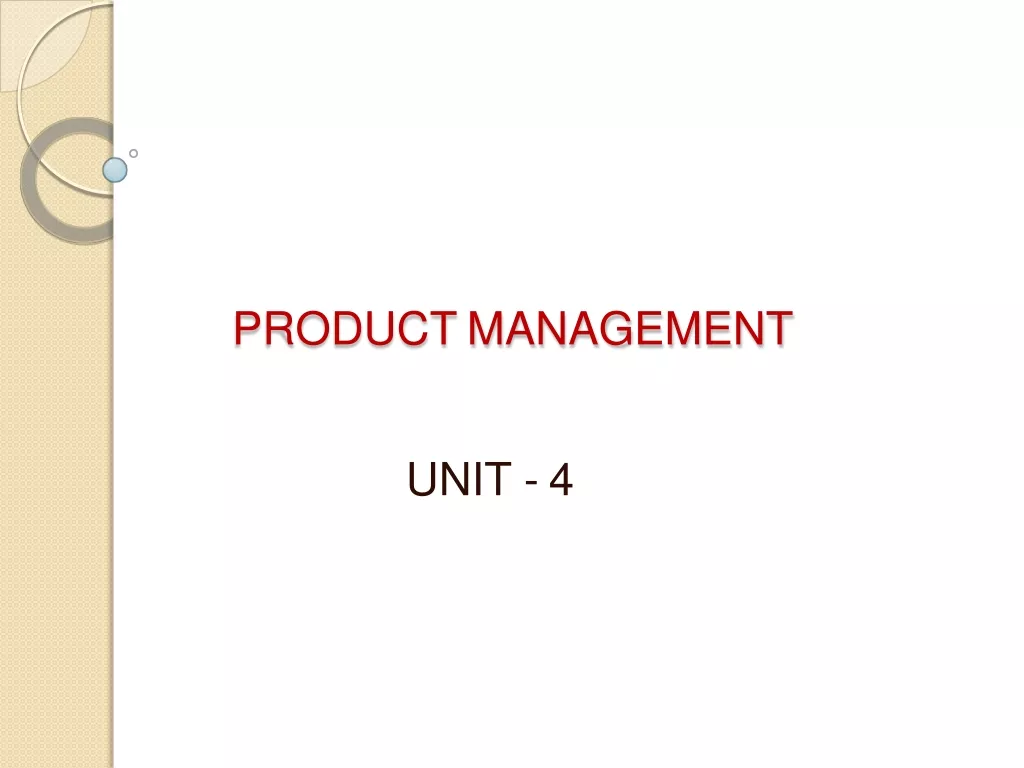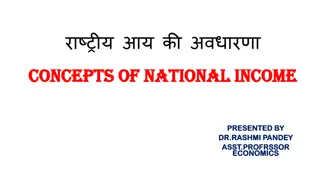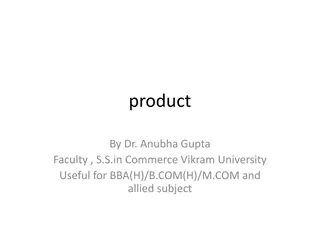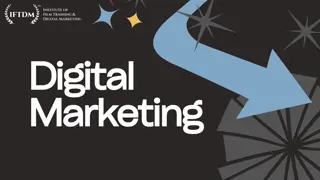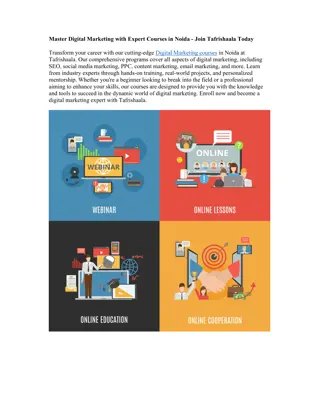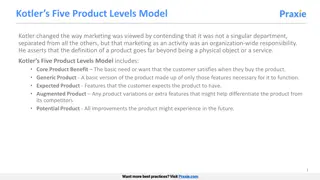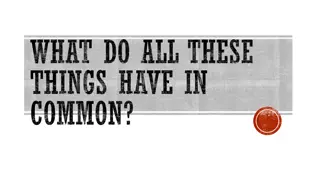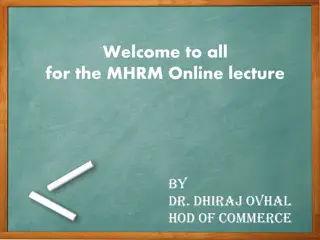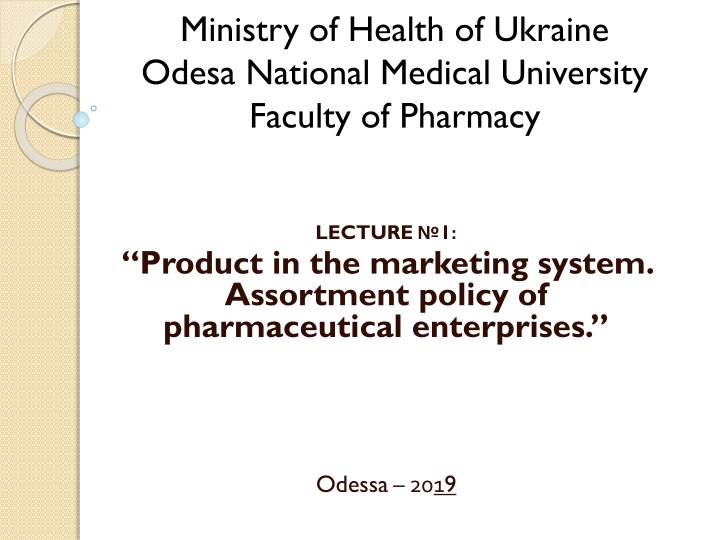
Pharmaceutical Marketing: Product Assortment Policy and Classification
Explore the complexities of pharmaceutical marketing by delving into the assortment policy and classifications of products offered by pharmaceutical enterprises. Learn about the different groups of medicines, their classifications, and characteristics that shape the product range in this informative lecture.
Download Presentation

Please find below an Image/Link to download the presentation.
The content on the website is provided AS IS for your information and personal use only. It may not be sold, licensed, or shared on other websites without obtaining consent from the author. If you encounter any issues during the download, it is possible that the publisher has removed the file from their server.
You are allowed to download the files provided on this website for personal or commercial use, subject to the condition that they are used lawfully. All files are the property of their respective owners.
The content on the website is provided AS IS for your information and personal use only. It may not be sold, licensed, or shared on other websites without obtaining consent from the author.
E N D
Presentation Transcript
Ministry of Health of Ukraine Odesa National Medical University Faculty of Pharmacy LECTURE 1: Product in the marketing system. Assortment policy of pharmaceutical enterprises. Odessa 2019
The first and most important component of the pharmaceutical marketing complex that its enterprise develops for its target consumers is pharmaceutical products.It is divided into two broad groups: medicines and medical products.
Classifications of medicines and medical products Medicines are substances or mixtures of natural, synthetic or biotechnological origin that are used to prevent pregnancy, prevent, diagnose and treat human diseases or alter the state and function of the body.
Medicines classified for: toxicological groups anatomical and lymphoma principle (agents that affect the musculoskeletal system,) therapeutic use (analgesics, antibiotics, antihypertensives, etc.); pharmacological action (anticoagulants, diuretics, vasodilators, etc.); chemical structure (alkaloids, cardiac glycosides, steroids, etc.); type of control and treatment (narcotics, psychotropic substances and precursors); prescribing rules and procedure for dispensing (prescription drugs and prescription drugs);
Medicines classified for: method of use (external, internal); physicochemical properties ( thermolabile,); aggregate state (drugs in the mass "angro" - solid, liquid, soft, gaseous); type of dosage form (solutions, suspensions, emulsions, drops, powders, tablets, pills,); ready-made medicines (factory and pharmacy manufacture) and medicines of individual manufacture ; shelf life - with short shelf life (up to two years) and long shelf life (more than two years);
Characteristics of the product range of the pharmaceutical enterprise The product assortment is a collection of assortment groups of drugs and / or medical products offered by the pharmaceutical company. Assortment group - a set of assortment items of drugs or medical products for this functional purpose.
The range of medicines is characterized by: - width , which determines the number of proposed product groups (for medicines - the number of pharmacotherapeutic groups); - depth , which reflects the number of items in each product group; - saturation , which is determined by the total number of drugs offered; - Comparability (harmony) , which reflects how closely the different product groups are linked in terms of final consumption, distribution channels, price range, etc.
Expanding the range - increasing the number of medicines compared to what is currently available .May be: - at the bottom , that is, a pharmaceutical company that covers the upper segment of the market and produces expensive drugs, then extends its activities to the lower segment ; - upwards , that is, a pharmaceutical company that occupies the lower segments of the market, often wanting to break into higher segments, wishing to achieve higher growth rates or higher profits, as well as being able to position itself as a full-line product manufacturer ; - in both directions simultaneously , the pharmaceutical manufacturer that operates in the middle segment of the market, may decide to expand their product range and up and down .
Poles replenishment assortment of drugs - saturation of the product range , the development of new drugs or varieties of their dosage forms to existing ones ; - modification - adaptation drugs to special on social needs and characteristics of each segment, creating at the same time a number of modifications in a variety of dosage forms.This makes it possible to make fuller use of the absorbing capacity of the market, taking into account the specifics, requirements of individual consumers in different regions of the country and abroad, to fill the niches where there is no competition or it is negligible;
Poles replenishment assortment of drugs - diversification - in the general sense is the expansion of the activity of large pharmaceutical enterprises beyond the scope of the main business, which means the release of a new type of production that is not related to the main production.- modernization - change, improvement of medicines that meets modern requirements.It envisages introduction of modern technologies, advanced machines and equipment in the production of medicines.
Pharmaceutical innovations are new drugs and new processes, as well as their significant technological changes. Pharmaceutical innovations are classified into two types:product (grocery) and process.
Pharmaceutical innovations Products (Grocery) include: creation and release of original drugs; development and production of generic drugs; introduction of new forms of drugs; Improvement of the quality of already produced drugs; identify new areas of application of known drugs.
Pharmaceutical innovations Process are divided into: technological (introduction of new or improvement of existing technologies); organizational and managerial (development of new markets, use of new channels of promotion of medicines and forms of sales promotion, use of new economic, managerial, organizational mechanisms); social (improving the quality of drugs already being produced; improving working conditions and improving the qualification and professional level of staff); information (implementation of information technologies in management, streamlining of information flows).
LEVELS OF NOVELTY OF MEDICINES generic drug - a drug whose term of patent protection for an active substance has expired. An original drug is a product that is owned only by the company that developed it or the company that holds the first license to sell it.The active substance of OD has a patent, until the expiration of which no other pharmaceutical company has the right to synthesize and use this active substance for commercial and non- commercial needs. new existing pharmacological group pharmacological group
THE MAIN STAGES OF DRUG DEVELOPMENT The name of the stage and its relevance for: of the original medication generic medication Stage I Scientific idea and its rationale Not done II Directed synthesis or screening of biologically active substances Not done III Development of technology and methods of control; biopharmaceutical simplified preclinical studies and limited clinical trials or demonstration of bioequivalence of medicinal products Development of control technology and methods ; biopharmaceutical, preclinical and clinical studies IV Commercial production, marketing and marketing
COMPETITIVENESS OF A MEDICINAL PRODUCT is a set of consumer properties of a medicinal product provided during development and production, which contributes to its fastest realization on a specific market in a certain period of time in the case of differences from analogues: by the degree of satisfaction of the needs of the consumer organization or the individual consumer and the level of costs for its purchase and use; by the degree of awareness, accessibility and convenience of the consumer in making the purchase and use, provided with marketing and logistical measures.
A trademark is a name, a name, a symbol, a picture, or a combination thereof, intended to identify the products or services of a particular seller and differentiate them from the products of competitors. Pharmaceutical companies manufacturing generic drugs often release them under an international, non-proprietary name or under a specially crafted name that must be different from the original drug's name.
Function of Trademark The role and meaning of trademarks is that they are: distinguish between medicines or medical products; facilitate identification of the drug; are the guarantor of the high quality of the medicinal product; provide information about the drug and its manufacturer;
Function of Trademark promote a medicinal product; allow a company with lower costs to market new drugs; enhance corporate spirit, uniting co workers,causing a sense of responsibility for the common cause - "corporate patriotism"; promote the prestige of a medicinal product; provide legal protection for medicines.
Brand A brand is a strong perception of the consumer about the brand, its image in the minds of consumers.In other words, a brand is called a well-known brand with a defined, formed position.A brand is a broad concept that, in addition to the brand, covers: the drug itself, its characteristics, expectations, consumer perceptions, consumer information and promises of certain benefits that the brand owner guarantees to consumers.
Packaging of medicines Another element of a pharmaceutical enterprise's product policy is packaging, which, in a mature market, is becoming an increasingly effective marketing tool, an integral part of the company's image and the subject of innovative search.
STAGES OF THE DRUG PACKAGING PROCESS Consumer Grocery (product) packaging retail (individual) packaging Transport step 0 step 2 step 3 step 1 the pre- preparation phase of medicines and packaging materials drugs are packaged in retail (protective, individual) packaging Product (grocery) packaging Transport packaging




